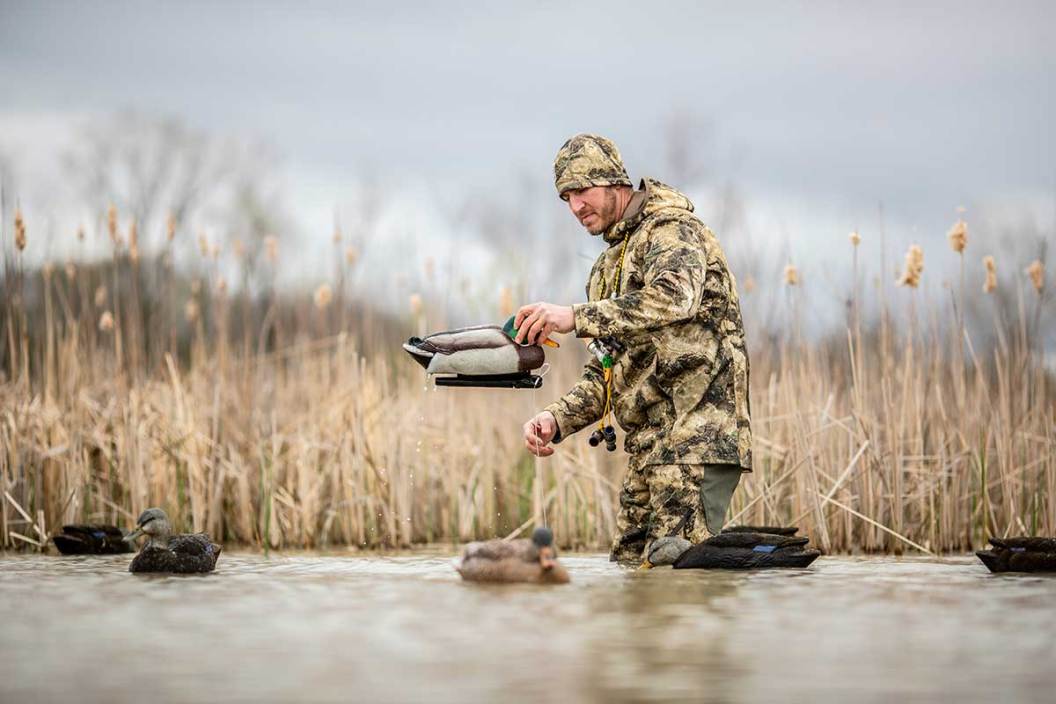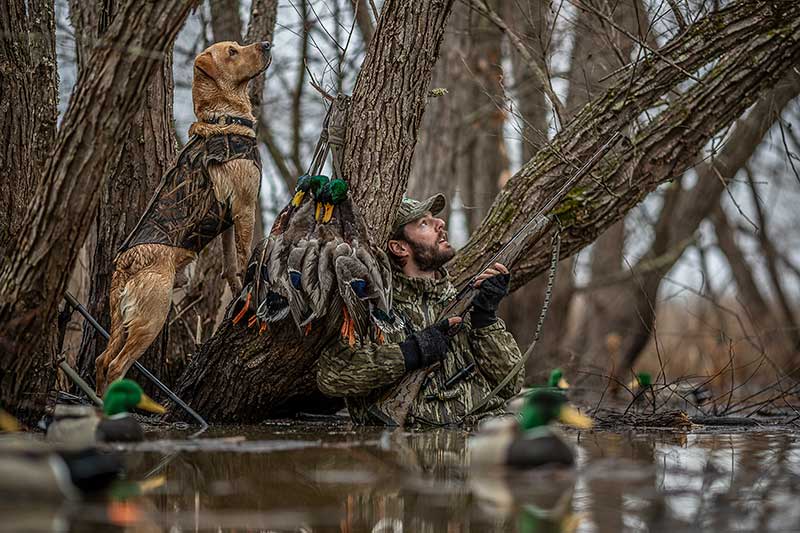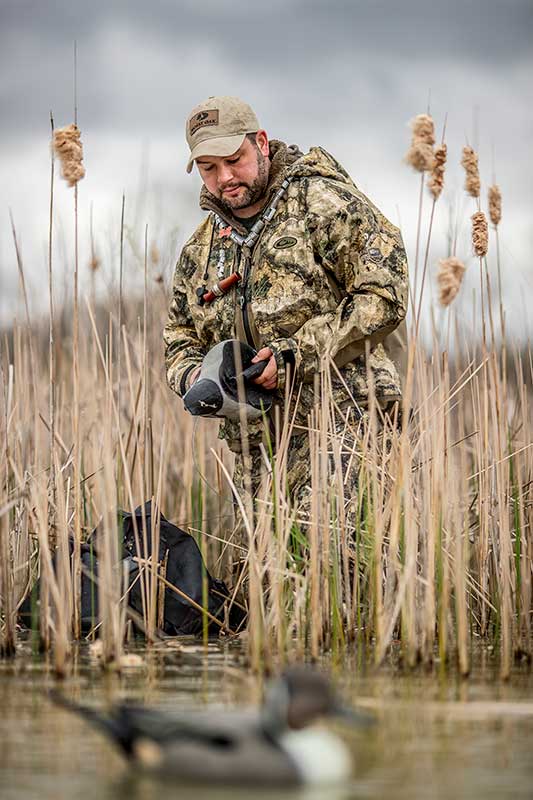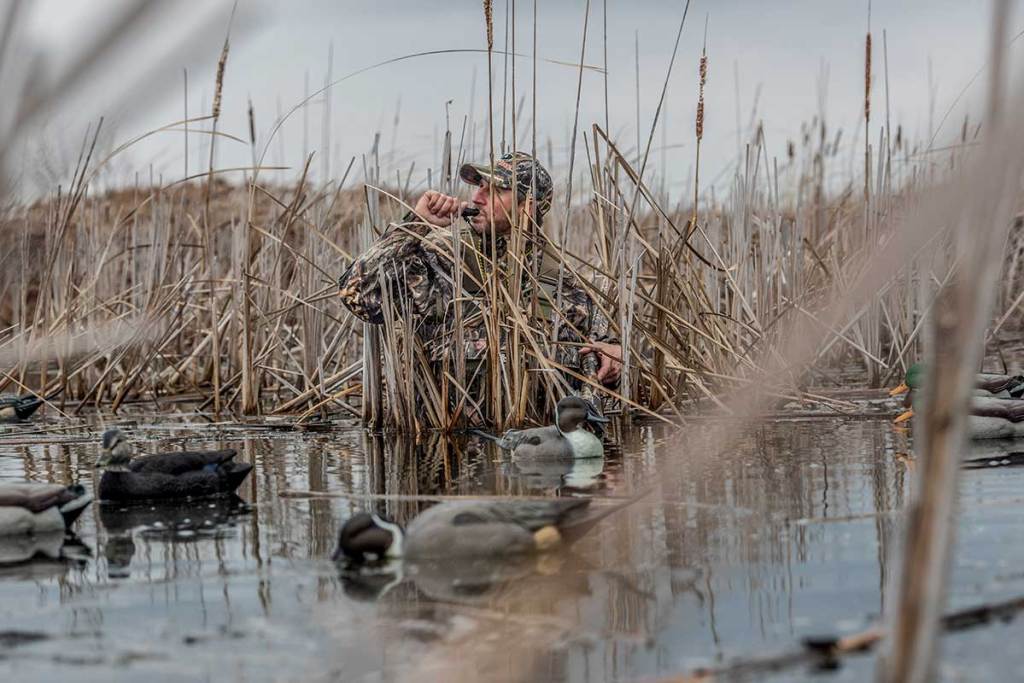In the simplest of terms, a decoy rig is just a line with a clip to attach to your decoy, as well as an anchor to keep them where you want them to be. However, it can get much more complex than that depending on where you are hunting and what the conditions are. These factors will determine what kind of line you use, how deep you go, how heavy your weight is, and even what type of weight will work best. As you try different setups, you'll undoubtedly develop a personal preference, but there are great universal baselines to go off of. Over the years I have learned from many great waterfowl hunters and have adopted their setups, while also adding my own unique style. Here are some great decoy rig setups to use with common waterfowl scenarios that just might help you this hunting season.
Deep Water Ducks

Hunting ducks in deep water, whether sea ducks by the ocean or divers on a big river, can be an incredible experience. But there are some things to keep in the back of your mind, especially when chucking out your decoys. The current can become aggressive in an instant, and if you're not prepared, you might be forced to pack up early and chase down your decoys as they float out of sight, and possibly forever. This has happened to me more times than I care to mention, and because of that, I try to be extra careful with my deepwater setup.
For individual decoys, a 10-foot Texas rig with a 10-ounce mushroom weight is usually my preferred rig when I am hunting deep water and the current is moderate. HEYDAY Outdoor has some of the most reliable rigs I have ever used on the deep water, and at a pretty affordable price. However, that is a young man's game and can be rather inconvenient. Gang-rigged sets are by far the best to use on deep water setups. They save time, they tangle significantly less, and they're using just a few anchors, compared to dozens. You can create your own gang rig with some heavy decoy line, looped in a position to clip on each decoy. However, companies like Rig'Em Right and HEYDAY offer full gang rig systems, with different lengths and a variety of connection points.
Flooded Timber Mallards
When I am hunting in flooded timber, whether in Arkansas or Mississippi, I am typically not worried about current or even wind conditions while choosing my rigs. Generally speaking, water in flooded timber will knee deep or less, so I can get away with using much shorter rigs than I would on the deep water. A 4-foot Texas rig with a 4-ounce teardrop weight will provide the perfect length needed for these situations, and while a teardrop weight won't provide the grip that a mushroom weight would, it will work fine in the timber. Invest in a quality, oversized carabiner for easy organization, as well as using convenient swivel-clips that will make setup so much easier.
Prairie Potholes
Hunting secluded waterholes in states like Kansas and South Dakota can provide some of the most active hunting you've ever seen. But if there is one drawback, it's that it usually requires a long walk of hauling gear in order to get there. There are ways around this though, or at least methods that make it a little bit more manageable.
While the help of fellow hunters is highly encouraged, especially with long treks to that prairie honey hole, this method has worked for me even on solo hunts. I can easily rig 20 to 24 ducks to larger diameter PVC coated cable, preferably 3/32" diameter or larger. A 4-foot Texas rig with a 6-ounce mushroom weight is my go-to in this scenario, as the wind can sometimes become intense even midday. With a little bit of effort, you should be able to position all of these ducks into a large, mesh decoy bag. Invest in one with shoulder straps, and you'll thank yourself tenfold. Brands like Tanglefree and Higdon make great slot bags for situations such as this, however I don't find that they're as convenient as a regular mesh decoy pack.
Public Land Marsh
Early season hunts on the marshes can be hot when you play your cards right. I have had days hunting public land marshes and creeks here in the Midwest that I would put above Arkansas timber. The water is shallow and the wind is typically minimal, allowing for much easier setups while still being just as effective. A 2.5-foot Texas rig with a 3-ounce teardrop weight is the perfect setup for these situations. It's extremely effective on the water while also being incredibly easy to pack in and pack out. Depending on the size of the marsh, I'll usually include six wood ducks in my spread, a dozen mallards, and I have found that a 90-foot jerk rig with six to eight black ducks and/or teal can add a lot to the realism of your spread.
These decoy rig systems have been the lifeline of my waterfowl hunting for years. I still find myself learning new things each hunting season, which as a result makes me adapt or add on to my current system. But these should serve as a great baseline for your hunting season, and give you a good foundation that you can add your own unique preferences to that work for you and your hunting buddies.







